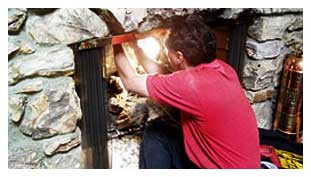
Slide title
Write your caption hereButton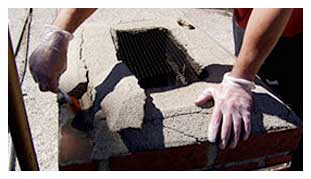
Slide title
Write your caption hereButton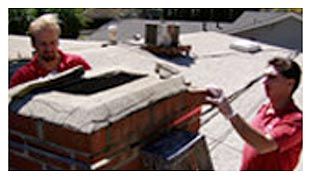
Slide title
Write your caption hereButton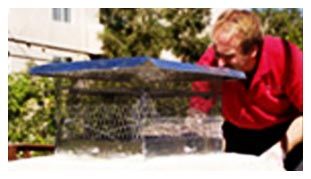
Slide title
Write your caption hereButton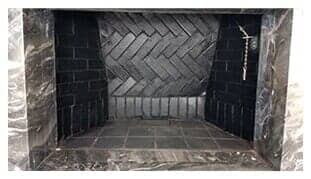
Slide title
Write your caption hereButton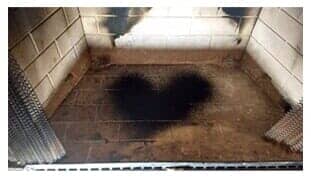
Slide title
Write your caption hereButton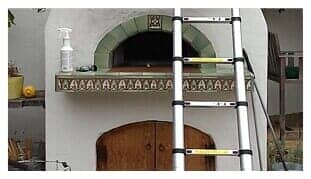
Slide title
Write your caption hereButton
Slide title
Write your caption hereButton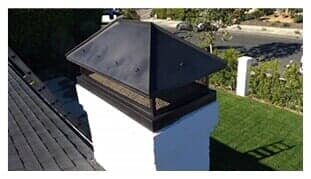
Slide title
Write your caption hereButton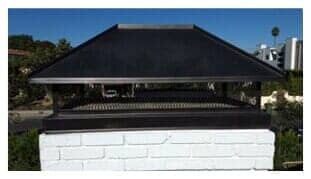
Slide title
Write your caption hereButton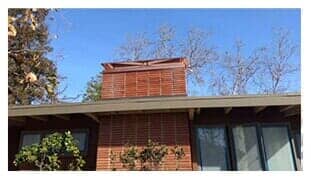
Slide title
Write your caption hereButton
Tips and Articles
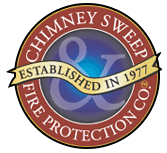
“A Safe Hearth, A Secure Home.”™
AAA CHIMNEY SWEEP & FIRE PROTECTION CO.

Slide title
Write your caption hereButton
Slide title
Write your caption hereButton
Slide title
Write your caption hereButton
Slide title
Write your caption hereButton
Slide title
Write your caption hereButton
Slide title
Write your caption hereButton
Slide title
Write your caption hereButton
Slide title
Write your caption hereButton
Slide title
Write your caption hereButton
Slide title
Write your caption hereButton
Slide title
Write your caption hereButton

Slide title
Write your caption hereButton
Slide title
Write your caption hereButton
Slide title
Write your caption hereButton
Slide title
Write your caption hereButton
Slide title
Write your caption hereButton
Slide title
Write your caption hereButton
Slide title
Write your caption hereButton
Slide title
Write your caption hereButton
Slide title
Write your caption hereButton
Slide title
Write your caption hereButton
Slide title
Write your caption hereButton
Tips & Articles
Article:
The Hunt For Red Hot Home Hazards
National Fire Protection Assc. Magazine
If you have a fireplace make sure it’s designed to be a working fireplace before you use it. Many fireplaces are designed for just decoration. If you’re not sure, a fireplace installer can easily check for you. Never leave a fire unattended, and make sure fires are completely out before leaving the room.
Never use combustible or flammable liquids to start a fireplace or wood or coal stove, and never use trash to feed it, either. Both are unpredictable fuels that are likely to overtax your fireplace and chimney. Similarly, use only seasoned, dry, hard wood or, if you use artificial logs, burn only one at a time. More than one could produce more heat than the system can stand.
If you have a chimney, be sure you have it cleaned once a year by a professional. The incomplete burning of wood or coal creates a combustible deposit called “creosote” that is the material most frequently ignited in home heating fires. If you have a wood or coal stove or a fireplace insert or if you use glass doors on your fireplace, you’re probably building up creosote faster, and you will probably need to clean the chimney more often.
Make sure you have a screen for your fireplace and always use it to keep sparks from flying into the room. Look closely at your carpet, rug, or floor. If you see burn marks, you haven't been screening your fireplace effectively. If you can’t screen embers or ashes well enough, you may need a fire-resistant rug designed for use near fireplaces. Hot embers and ashes caused 1,700 fires and 19 deaths a year in living rooms alone. You should also use a spark arrestor, or chimney cap over the top of the chimney to keep animals out and to prevent embers and ashes from flying onto the roof or outer walls. Dispose of ashes using a metal container with a tight lid.
Article: Creosote & Chimney Fires
A dirty chimney with only a quarter inch of soot contains the highly flammable substance called creosote. An innocent, errant spark from a hot fire (around 900 degrees) could easily ignite the creosote in your fireplace into a roaring chimney fire-a terrifying disaster which killed almost 1,000 people last year, and destroyed over 180 million dollars in property. At the height of a chimney fire, the creosote can burn at temperatures exceeding 2000 degrees F. Flames and flying embers can easily land on the roof and ignite the wood framing of your home. The intense heat can cause the flue to crack or collapse thus causing the interior walls of your house to burst into flames.
Creosote in chimneys comes in several stages. In its flaky, soot form (1st degree), it is easily brushed away leaving safe and clean flue walls. When it appears as hard, brittle deposits (2nd degree), the chimney sweep’s extra efforts in brushing will remove most of the build-up. But the nasty glazed variety (3rd degree) is truly the most dangerous form, and the most difficult to remove from your home’s wood burning system. And until recently, glazed creosote was almost impossible to remove in many instances.
Glazed creosote in your chimney is recognizable by its dense, shiny tar-like appearance. This unpleasant substance is basically wood tar, which has become baked onto the walls of the chimney or flue lining. Once it gets burning in your chimney, it is extremely difficult to extinguish.
Article: What causes glazed creosote to accumulate?
Unfortunately, there is no such thing as creosote-free wood burning. Creosote accumulation will occur no matter what kind of wood is burned and no matter what kind of wood burning system is used. What determines the type of creosote and its severity is how the fuel is burned. Solid fuel authorities agree that the amount of smoke, the temperature of the fire and the regulation of air (turbulence) are the major variables, which determine the amount of build-up. A low burning fire, for example, will result in incomplete combustion, the number one cause of glazed creosote accumulation. An improperly installed fireplace insert that allows the smoke to cool too quickly in the firebox is another situation, which causes severe glazing. To combat this problem, flue gases should be kept between 250 degrees and 500 degrees F. in order to reduce the rate of creosote accumulation. (Be sure to ask your chimney sweep about proven methods to assure correct burning.)
If your chimney sweep has already diagnosed glazed creosote as a problem in your chimney take his or her advice seriously. DO NOT continue to use your affected fireplace or woodstove. The simple fact is that a hot fire could easily ignite the glazed creosote and result in a dangerous chimney fire. And a low burning fire under such hazardous conditions will only worsen the glazed creosote problem.
Article: Chimney Blaze Startles Family
National Fire Protection Assc. Magazine
The Torres family didn't realize their chimney was engulfed in flames Wednesday night until a neighbor knocked on the door to tell them their house was on fire.
"I just got the kids out and called 911," said Jill Torres, who lives along Bella Santa Drive in Valencia. "My husband jumped on the roof."
Mike Torres managed to get most of the flames out and firefighters arrived within three minutes to finish the job, Jill said.
Jill and Mike Torres had tucked their three children in bed and were cozy in front of their fireplace, watching a video and wrapping Christmas gifts. Both had colds and couldn't smell the smoke.
"We were sitting here clueless," Jill Torres said.
The fire started in the upper section of the chimney on the second floor of the home, said Los Angeles County Fire Department Capt. Gary Deliamalva.
The Torres family is not sure what caused the fire, but fire officials said there was possible damage inside the chimney before the uncontrolled flames shot out of the home.
This time of year, chimney fires are common, with heating-equipment fires ranking second among the leading cause offire deaths in American homes, according to the National Fire Protection Association in Quincy, Mass.
"The home-heating fire problem in America is largely one of human error, particularly with the misuse of portable heaters,fireplaces and wood stoves," said Meri-K Appy, a spokesperson for the NFPA.
An estimated 73,800 home-heating fires occurred throughout the nation in 1994, killing 487 people and injuring almost 2,000, according to the NFPA.
In many cases, homeowners fail to inspect their fireplaces for cracks and damage after earthquakes or the chimney is not cleaned, said county Fire Department Capt. Ross Marshall.
Cracks in the mortar - particularly in older homes - cause wood onthe home to be exposed, starting an inferno in the fireplace, fire officials said.
Chimney sweeps (those who inspect and clean fireplaces) generally recommend chimneys to be cleaned once 3/4 of a cord to one cordof wood is burned.
This equates to about 75 to 100 fires, said Sindee Kritzberg, the manager of Chimney Sweep and Fire Protection in Woodland Hills, which cleans out chimneys throughout the Santa Clarita Valley and San Fernando Valley.
The problem lies in thick creosote forming. Creosote is a chemical substance, which forms when wood burns and builds up in the chimney.
Built-up creosote can cause a chimney fire if it is not removed through cleaning, which often involves a professional chimney sweep scrubbing and vacuuming out the deposits.
A routine cleaning and inspection takes less than 2 hours.
"A chimney fire almost sounds like a freight train rushing through. It can literally form fireballs that shoot out onto the roof or nearby brush, if not cleaned out," Kritzberg said.
The chimney fire can extend to the rest of the home by igniting the roof or leap to a neighbor's home via trees, fire officials said.
Article: Fire Burns Recently Remodeled Home To Ground
Deteriorated Chimney Cited As Cause
Fire fighters arrived at the scene of a fire last night too late to save the home or its furnishings. Several measures had been taken to prevent fires when the home was recently remodeled, said the owners of their loss.
However, under questioning by investigators, it was determined that the chimney, ironically the only part of the house left standing after the blaze, had not been cleaned nor had the masonry been checked for cracks or leaks in several years.
A dense build-up of creosote deposits in the chimney fueled the fire. The deteriorated condition of the chimney allowed flames to escape through holes in the flue, which then spread rapidly throughout the two-story building.
Fire officials said of the tragedy, “We see fires like this every day. People get lazy or forgetful and take the condition of their chimneys for granted. Then something like this happens. Fortunately, no one was hurt. But next time?"
Liability & Workman’s Comp Insured | Quality Satisfaction Guaranteed
- Business license 249185
- Family Owned and Operated Since 1977
- Member Of The Better Business Bureau
- NFPA - National Fire Protection Association Member
- "A+" Accredited Rating
with the Better Business Bureau
- "A"
Rating with Angie's List
- National Chimney Sweep Guild Member
- Value Star Customer Rated Company
- Named "Best Chimney Sweep Of The Southland" By KBIG FM
- As Featured On TV & In The L.A. Daily News, The Santa Clarita Daily News, The Burbank Times, The Tolucan, The Northridger and the Wall Street Journal.
Endorsed by
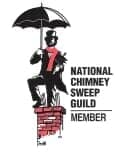

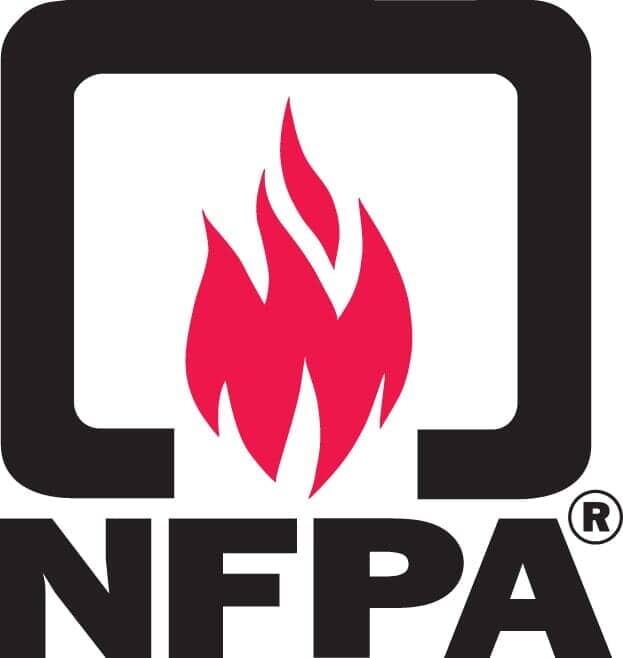

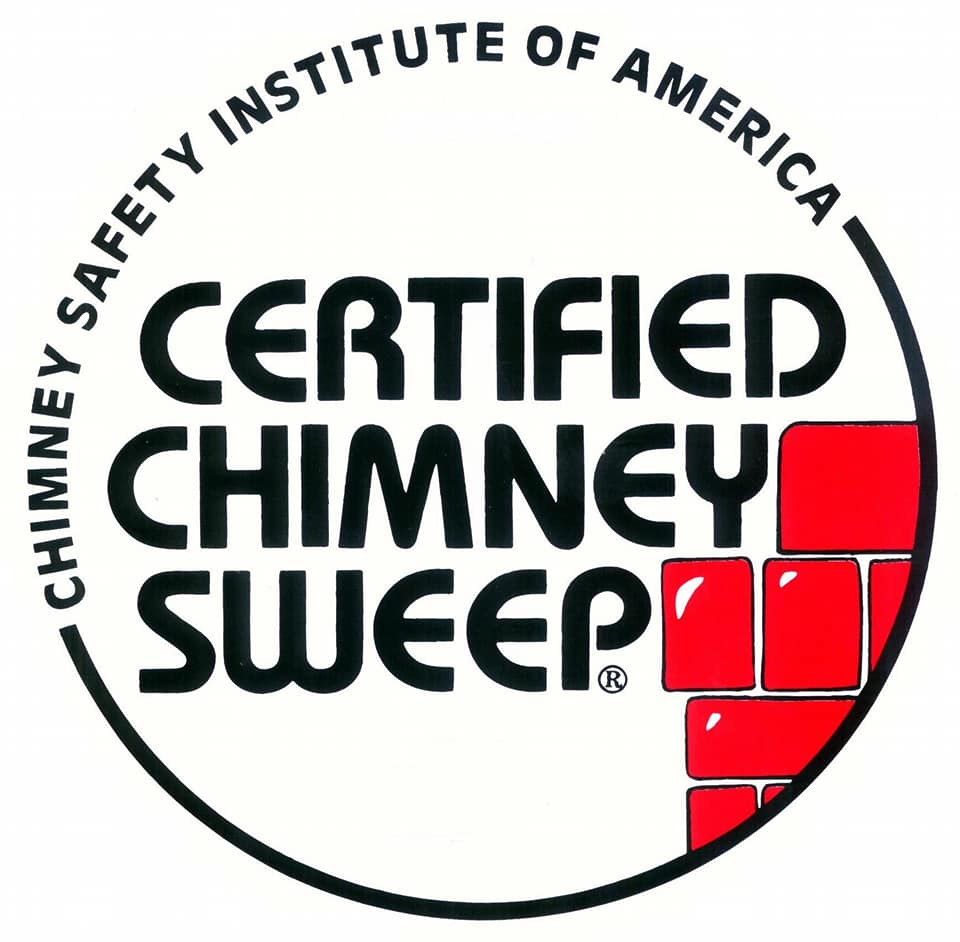
Tips & Articles
Article:
The Hunt For Red Hot Home Hazards
National Fire Protection Assc. Magazine
If you have a fireplace make sure it’s designed to be a working fireplace before you use it. Many fireplaces are designed for just decoration. If you’re not sure, a fireplace installer can easily check for you. Never leave a fire unattended, and make sure fires are completely out before leaving the room.
Never use combustible or flammable liquids to start a fireplace or wood or coal stove, and never use trash to feed it, either. Both are unpredictable fuels that are likely to overtax your fireplace and chimney. Similarly, use only seasoned, dry, hard wood or, if you use artificial logs, burn only one at a time. More than one could produce more heat than the system can stand.
If you have a chimney, be sure you have it cleaned once a year by a professional. The incomplete burning of wood or coal creates a combustible deposit called “creosote” that is the material most frequently ignited in home heating fires. If you have a wood or coal stove or a fireplace insert or if you use glass doors on your fireplace, you’re probably building up creosote faster, and you will probably need to clean the chimney more often.
Make sure you have a screen for your fireplace and always use it to keep sparks from flying into the room. Look closely at your carpet, rug, or floor. If you see burn marks, you haven't been screening your fireplace effectively. If you can’t screen embers or ashes well enough, you may need a fire-resistant rug designed for use near fireplaces. Hot embers and ashes caused 1,700 fires and 19 deaths a year in living rooms alone. You should also use a spark arrestor, or chimney cap over the top of the chimney to keep animals out and to prevent embers and ashes from flying onto the roof or outer walls. Dispose of ashes using a metal container with a tight lid.
Article: Creosote & Chimney Fires
A dirty chimney with only a quarter inch of soot contains the highly flammable substance called creosote. An innocent, errant spark from a hot fire (around 900 degrees) could easily ignite the creosote in your fireplace into a roaring chimney fire-a terrifying disaster which killed almost 1,000 people last year, and destroyed over 180 million dollars in property. At the height of a chimney fire, the creosote can burn at temperatures exceeding 2000 degrees F. Flames and flying embers can easily land on the roof and ignite the wood framing of your home. The intense heat can cause the flue to crack or collapse thus causing the interior walls of your house to burst into flames.
Creosote in chimneys comes in several stages. In its flaky, soot form (1st degree), it is easily brushed away leaving safe and clean flue walls. When it appears as hard, brittle deposits (2nd degree), the chimney sweep’s extra efforts in brushing will remove most of the build-up. But the nasty glazed variety (3rd degree) is truly the most dangerous form, and the most difficult to remove from your home’s wood burning system. And until recently, glazed creosote was almost impossible to remove in many instances.
Glazed creosote in your chimney is recognizable by its dense, shiny tar-like appearance. This unpleasant substance is basically wood tar, which has become baked onto the walls of the chimney or flue lining. Once it gets burning in your chimney, it is extremely difficult to extinguish.
Article: What causes glazed creosote to accumulate?
Unfortunately, there is no such thing as creosote-free wood burning. Creosote accumulation will occur no matter what kind of wood is burned and no matter what kind of wood burning system is used. What determines the type of creosote and its severity is how the fuel is burned. Solid fuel authorities agree that the amount of smoke, the temperature of the fire and the regulation of air (turbulence) are the major variables, which determine the amount of build-up. A low burning fire, for example, will result in incomplete combustion, the number one cause of glazed creosote accumulation. An improperly installed fireplace insert that allows the smoke to cool too quickly in the firebox is another situation, which causes severe glazing. To combat this problem, flue gases should be kept between 250 degrees and 500 degrees F. in order to reduce the rate of creosote accumulation. (Be sure to ask your chimney sweep about proven methods to assure correct burning.)
If your chimney sweep has already diagnosed glazed creosote as a problem in your chimney take his or her advice seriously. DO NOT continue to use your affected fireplace or woodstove. The simple fact is that a hot fire could easily ignite the glazed creosote and result in a dangerous chimney fire. And a low burning fire under such hazardous conditions will only worsen the glazed creosote problem.
Article: Chimney Blaze Startles Family
National Fire Protection Assc. Magazine
The Torres family didn't realize their chimney was engulfed in flames Wednesday night until a neighbor knocked on the door to tell them their house was on fire.
"I just got the kids out and called 911," said Jill Torres, who lives along Bella Santa Drive in Valencia. "My husband jumped on the roof."
Mike Torres managed to get most of the flames out and firefighters arrived within three minutes to finish the job, Jill said.
Jill and Mike Torres had tucked their three children in bed and were cozy in front of their fireplace, watching a video and wrapping Christmas gifts. Both had colds and couldn't smell the smoke.
"We were sitting here clueless," Jill Torres said.
The fire started in the upper section of the chimney on the second floor of the home, said Los Angeles County Fire Department Capt. Gary Deliamalva.
The Torres family is not sure what caused the fire, but fire officials said there was possible damage inside the chimney before the uncontrolled flames shot out of the home.
This time of year, chimney fires are common, with heating-equipment fires ranking second among the leading cause offire deaths in American homes, according to the National Fire Protection Association in Quincy, Mass.
"The home-heating fire problem in America is largely one of human error, particularly with the misuse of portable heaters,fireplaces and wood stoves," said Meri-K Appy, a spokesperson for the NFPA.
An estimated 73,800 home-heating fires occurred throughout the nation in 1994, killing 487 people and injuring almost 2,000, according to the NFPA.
In many cases, homeowners fail to inspect their fireplaces for cracks and damage after earthquakes or the chimney is not cleaned, said county Fire Department Capt. Ross Marshall.
Cracks in the mortar - particularly in older homes - cause wood onthe home to be exposed, starting an inferno in the fireplace, fire officials said.
Chimney sweeps (those who inspect and clean fireplaces) generally recommend chimneys to be cleaned once 3/4 of a cord to one cordof wood is burned.
This equates to about 75 to 100 fires, said Sindee Kritzberg, the manager of Chimney Sweep and Fire Protection in Woodland Hills, which cleans out chimneys throughout the Santa Clarita Valley and San Fernando Valley.
The problem lies in thick creosote forming. Creosote is a chemical substance, which forms when wood burns and builds up in the chimney.
Built-up creosote can cause a chimney fire if it is not removed through cleaning, which often involves a professional chimney sweep scrubbing and vacuuming out the deposits.
A routine cleaning and inspection takes less than 2 hours.
"A chimney fire almost sounds like a freight train rushing through. It can literally form fireballs that shoot out onto the roof or nearby brush, if not cleaned out," Kritzberg said.
The chimney fire can extend to the rest of the home by igniting the roof or leap to a neighbor's home via trees, fire officials said.
Article: Fire Burns Recently Remodeled Home To Ground
Deteriorated Chimney Cited As Cause
Fire fighters arrived at the scene of a fire last night too late to save the home or its furnishings. Several measures had been taken to prevent fires when the home was recently remodeled, said the owners of their loss.
However, under questioning by investigators, it was determined that the chimney, ironically the only part of the house left standing after the blaze, had not been cleaned nor had the masonry been checked for cracks or leaks in several years.
A dense build-up of creosote deposits in the chimney fueled the fire. The deteriorated condition of the chimney allowed flames to escape through holes in the flue, which then spread rapidly throughout the two-story building.
Fire officials said of the tragedy, “We see fires like this every day. People get lazy or forgetful and take the condition of their chimneys for granted. Then something like this happens. Fortunately, no one was hurt. But next time?"
Liability & Workman’s Comp Insured | Quality Satisfaction Guaranteed
- Business license 249185
- CSIA Certification 9944
- Family Owned and Operated Since 1977
- Member Of The Better Business Bureau
- NFPA - National Fire Protection Association Member
- "A+" Accredited Rating
with the Better Business Bureau
- "A"
Rating with Angie's List
- National Chimney Sweep Guild Member
- Value Star Customer Rated Company
- Named "Best Chimney Sweep Of The Southland" By KBIG FM
- As Featured On TV & In The L.A. Daily News, The Santa Clarita Daily News, The Burbank Times, The Tolucan, The Northridger and the Wall Street Journal.
Tips & articles on fire safety
Endorsed by





11684 Ventura Boulevard, Studio City, California 91604
Los Angeles County: Bel Air, Beverly Hills, Beverly Glen, Brentwood, Burbank, Calabasas, Culver City, Glendale, Hollywood, Hollywood Hills, Highland Park, West Hollywood, Los Angeles, Los Feliz, Malibu, Marina del Rey, Mar Vista, Moorpark, Newbury Park, Pacific Palisades, Westwood, West LA, West Los Angeles, Santa Monica, Simi Valley, Thousand Oaks, Venice, Westchester. San Fernando Valley: SFV, Agoura Hills, Arleta, Balboa Park, Bell Canyon, Burbank, Cahuenga Pass, Calabasas. Canoga Park, Chatsworth, Encino, Glendale, Granada Hills, Hancock Park, Hidden Hills, Highland Park, Kagel Canyon, Knollwood, Mission Hills, North Hills, NoHo Arts District, North Hollywood, Northridge, Lake Balboa, Lake View Terrace, La Tuna Canyon, Olive View, Pacoima, Panorama City, Porter Ranch, Reseda, San Fernando, Sepulveda, Shadow Hills, Sherman Oaks, Studio City, Sun Valley, Sunland, Tarzana, Toluca Lake, Toluca Woods, Topanga Canyon, Tujunga, Universal City, Valley Glen, Valley Village, Van Nuys, Warner Center, West Hills, West Lake Village, West Toluca, Winnetka and Woodland Hills. Santa Clarita Valley: Santa Clarita, SCV, Canyon Country, Newhall, Saugus, Valencia, Castaic & Stevenson Ranch. San Gabrial Valley: Altadena, Alhambra, Arcadia, Duarte, E. Pasadena, La Cañada Flintridge, La Cresenta, Monrovia, Pasadena, Pomona, San Gabriel, San Marino, Sierra Madre, South Pasadena, South San Gabriel, Temple City, Walnut.
Los Angeles County: Bel Air, Beverly Hills, Beverly Glen, Brentwood, Burbank, Calabasas, Culver City, Glendale, Hollywood, Hollywood Hills, Highland Park, West Hollywood, Los Angeles, Los Feliz, Malibu, Marina del Rey, Mar Vista, Moorpark, Newbury Park, Pacific Palisades, Westwood, West LA, West Los Angeles, Santa Monica, Simi Valley, Thousand Oaks, Venice, Westchester. San Fernando Valley: SFV, Agoura Hills, Arleta, Balboa Park, Bell Canyon, Burbank, Cahuenga Pass, Calabasas. Canoga Park, Chatsworth, Encino, Glendale, Granada Hills, Hancock Park, Hidden Hills, Highland Park, Kagel Canyon, Knollwood, Mission Hills, North Hills, NoHo Arts District, North Hollywood, Northridge, Lake Balboa, Lake View Terrace, La Tuna Canyon, Olive View, Pacoima, Panorama City, Porter Ranch, Reseda, San Fernando, Sepulveda, Shadow Hills, Sherman Oaks, Studio City, Sun Valley, Sunland, Tarzana, Toluca Lake, Toluca Woods, Topanga Canyon, Tujunga, Universal City, Valley Glen, Valley Village, Van Nuys, Warner Center, West Hills, West Lake Village, West Toluca, Winnetka and Woodland Hills. Santa Clarita Valley: Santa Clarita, SCV, Canyon Country, Newhall, Saugus, Valencia, Castaic & Stevenson Ranch. San Gabrial Valley: Altadena, Alhambra, Arcadia, E. Pasadena, La Cañada Flintridge, La Cresenta, Monrovia, Pasadena, Pomona, San Gabriel, San Marino, South Pasadena,
Content, including images, displayed on this website is protected by copyright laws. Downloading, republication, retransmission or reproduction of content on this website is strictly prohibited. Terms of Use
| Privacy Policy
